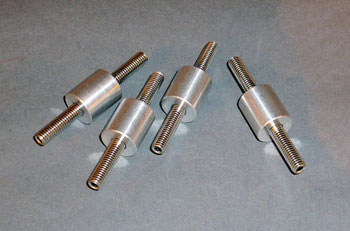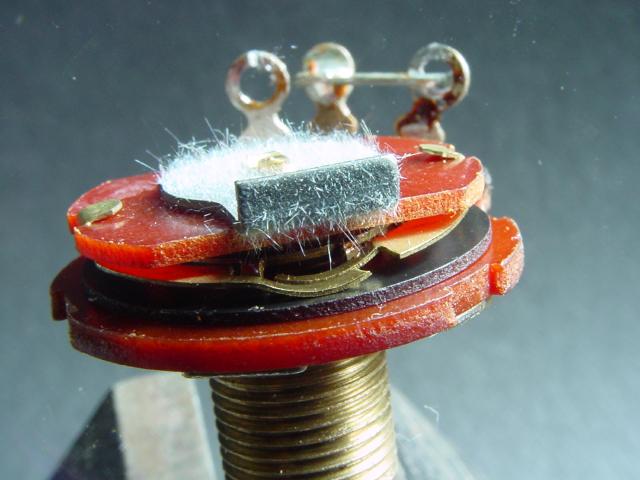MonoRT
MonoRT
Still Getting Experience...
Kurt, thanks - I will perform these checks when I next get a chance. This is a long-haul effort as my nest is far from empty and I am still involved in 24/7 systems support. Also, weak charging is annoying, but survivable compared to no charging.
Based on the almost 16 volt unregulated output, I donÔÇÖt WANT to believe that I have an alternator problem. However, when you are trouble-shooting, the root problem doesnÔÇÖt care what you WANT to believe.
Lew, I followed your thread with interest as it played out. My original battery was not known to have a problem, but it was old enough that it seemed wise to eliminate it as a possible source of trouble. When I first put in the new battery I did not charge it, but rode the bike right away. The voltage displayed by the meter was pretty low and I thought shoot! this is even worse than with the old battery. Then, I charged the new battery and went for another ride. Right off the charger, things looked good  for a bit and then the voltage settled back down again. The current battery reads about 13 volts after being on the trickle charger overnight. It always spins that old Bosch starter with authority  even when Ive been running lots of stop and go errands  but, so did the old battery. I put in a Westco sealed unit, so I cant test for a bad cell
I keep talking about running a heavy wire back from the diode board to the battery. Rick Jones at Motorad Electrik suggested that and Ive not tried it yet. I kind-of want to change one thing at a time. The last time I changed the timing chain, I put in one of those silicone gaskets between the timing chest and the engine case. I wonder if that could contribute to a poor ground path? Still, everything is BOLTED together and Id expect a good ground path through the bolts
Kurt, thanks - I will perform these checks when I next get a chance. This is a long-haul effort as my nest is far from empty and I am still involved in 24/7 systems support. Also, weak charging is annoying, but survivable compared to no charging.
Based on the almost 16 volt unregulated output, I donÔÇÖt WANT to believe that I have an alternator problem. However, when you are trouble-shooting, the root problem doesnÔÇÖt care what you WANT to believe.
Lew, I followed your thread with interest as it played out. My original battery was not known to have a problem, but it was old enough that it seemed wise to eliminate it as a possible source of trouble. When I first put in the new battery I did not charge it, but rode the bike right away. The voltage displayed by the meter was pretty low and I thought shoot! this is even worse than with the old battery. Then, I charged the new battery and went for another ride. Right off the charger, things looked good  for a bit and then the voltage settled back down again. The current battery reads about 13 volts after being on the trickle charger overnight. It always spins that old Bosch starter with authority  even when Ive been running lots of stop and go errands  but, so did the old battery. I put in a Westco sealed unit, so I cant test for a bad cell
I keep talking about running a heavy wire back from the diode board to the battery. Rick Jones at Motorad Electrik suggested that and Ive not tried it yet. I kind-of want to change one thing at a time. The last time I changed the timing chain, I put in one of those silicone gaskets between the timing chest and the engine case. I wonder if that could contribute to a poor ground path? Still, everything is BOLTED together and Id expect a good ground path through the bolts



 .
.
 I think using the speedometer cable bolt to disconnect the ground cable is asking for trouble ... it's easily stripped. Better, IMO, to use the battery terminal ... it's a pain to pull a saddle bag to get the seat open, to get the tool tray out, to disconnect the battery .. .. but it's one less worry I have about my old /5.
I think using the speedometer cable bolt to disconnect the ground cable is asking for trouble ... it's easily stripped. Better, IMO, to use the battery terminal ... it's a pain to pull a saddle bag to get the seat open, to get the tool tray out, to disconnect the battery .. .. but it's one less worry I have about my old /5. I would get the requisite charging only to have it drop off again just like you are talking about. What I would do is disconnect that harness at both ends and check the resistance on all of these wires. Chances are you have a bad connection at one end or the other of 1 or more of those wires. You can get the connectors at Radio Shack or a good auto parts store and build your own harness.
I would get the requisite charging only to have it drop off again just like you are talking about. What I would do is disconnect that harness at both ends and check the resistance on all of these wires. Chances are you have a bad connection at one end or the other of 1 or more of those wires. You can get the connectors at Radio Shack or a good auto parts store and build your own harness. 

